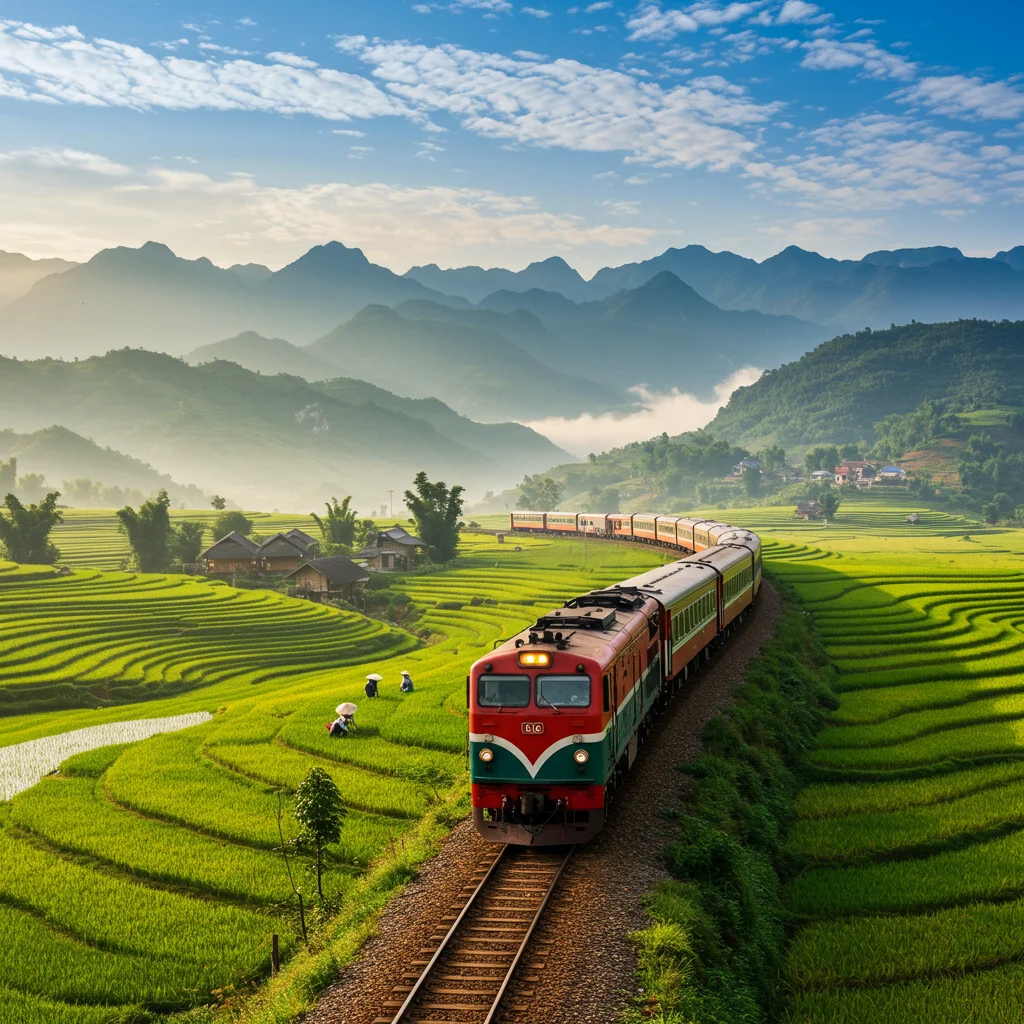Introduction to the Hanoi to Sapa Train Journey
The Hanoi to Sapa train journey is a celebrated passage through northern Vietnam, offering travelers a unique blend of comfort, cultural immersion, and breathtaking scenery. As the train glides through misty valleys and terraced rice fields, passengers are treated to a sensory experience that is both tranquil and invigorating. The rhythmic clatter of the rails, the gentle sway of the carriages, and glimpses of rural life create an atmosphere that is distinct from any other form of travel in the region.

For those seeking an authentic way to reach the mountain town of Sapa, the railway offers more than just transportation—it promises a memorable adventure that begins the moment you board in Hanoi.
Why Choose the Train from Hanoi to Sapa?
Taking the train from Hanoi to Sapa stands out for its combination of safety, comfort, and the opportunity to witness northern Vietnam’s landscapes unfold slowly outside your window. Unlike buses or private cars, the train allows travelers to rest in sleeping berths, socialize with fellow passengers, and enjoy a smoother ride through the night.
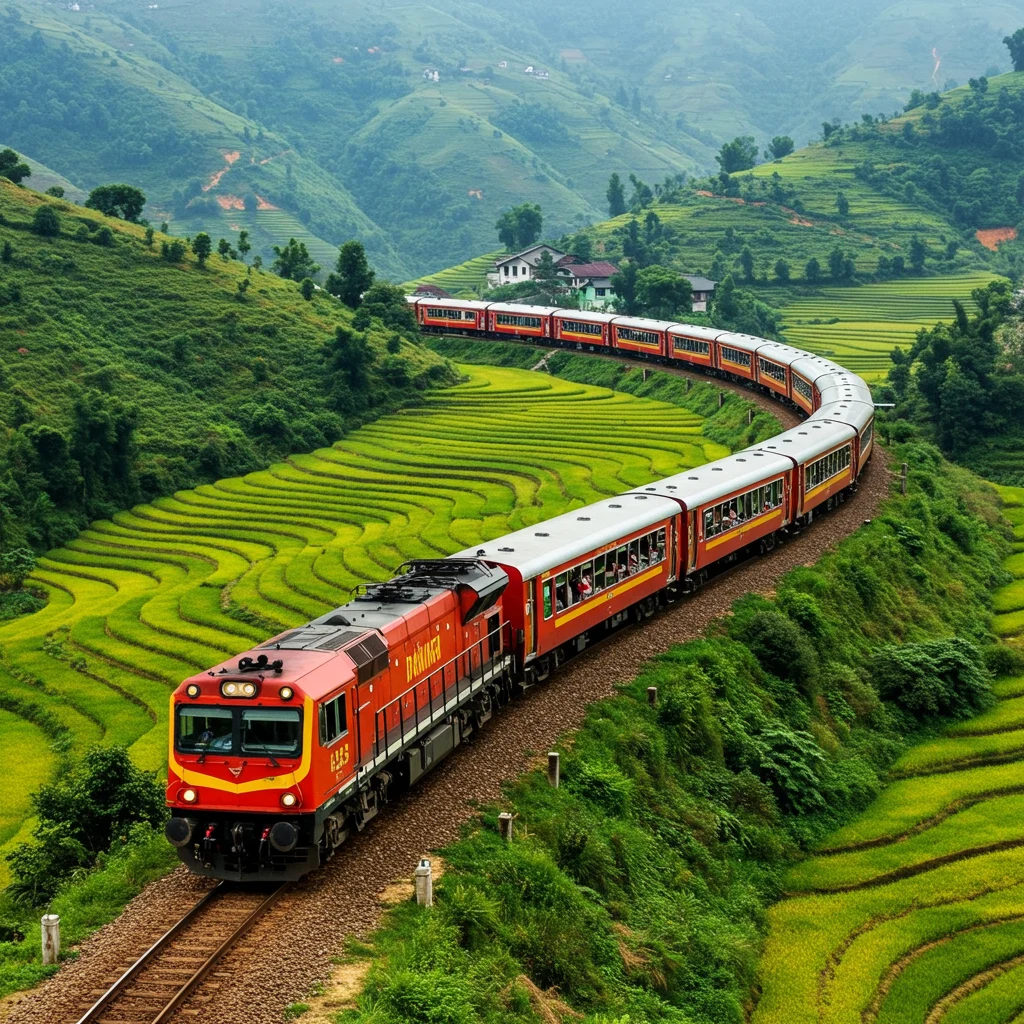
For many, the journey itself becomes part of the adventure, offering a slower, more immersive transition from the bustling capital to the highland serenity of Sapa.
Overview: Hanoi to Sapa Train Route
The Hanoi to Sapa train route actually terminates in Lao Cai, a border town near China, approximately 35 kilometers from Sapa. From Hanoi, the train travels northwest, passing through a series of rural towns, verdant valleys, and lush hillsides before arriving at Lao Cai Station. Passengers then complete the final leg to Sapa by road, typically via shuttle bus or taxi, enjoying the dramatic mountain scenery along the way.
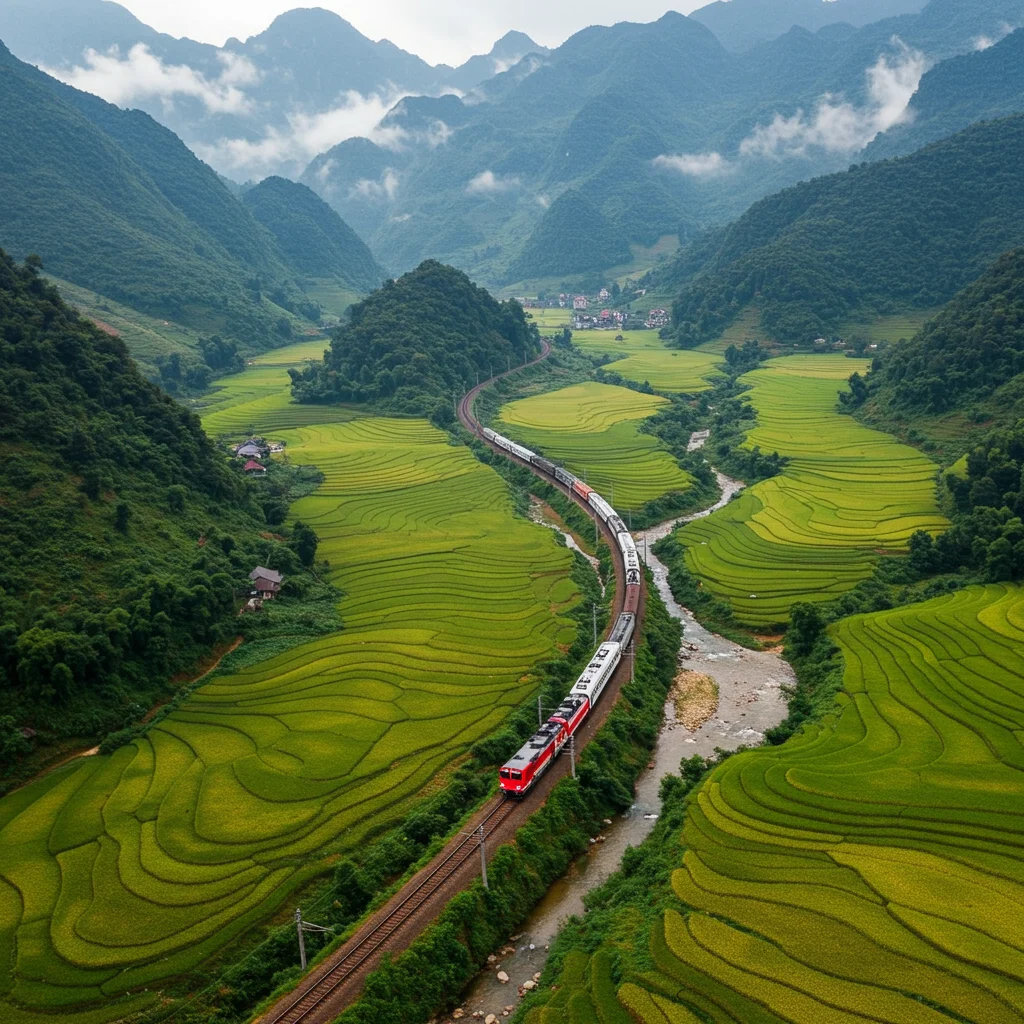
How Long Does the Train Journey Take?
The typical train journey from Hanoi to Lao Cai lasts between 7.5 to 8.5 hours, depending on the specific train and schedule. Most travelers opt for overnight departures, allowing them to sleep for much of the journey and arrive refreshed in the morning, ready to continue on to Sapa. The overnight schedule maximizes time efficiency and allows for a full day of exploration upon arrival.
What Makes the Hanoi to Sapa Train Scenic?
Passengers are treated to a constantly changing panorama as the train weaves through northern Vietnam’s countryside. Towering limestone peaks, mist-shrouded valleys, and emerald rice terraces dominate the view. Early morning sunlight often bathes the landscape in a golden glow, while evening departures reveal the twinkle of distant village lights.

Open windows bring in the scent of earth and fresh mountain air, while the sound of the train’s horn echoes across sleepy hamlets. This scenic journey is reminiscent of other iconic rail adventures, such as the route detailed in our guide to the Ella Kandy train in Sri Lanka.
Types of Trains Available on the Hanoi to Sapa Route
There are several types of trains operating between Hanoi and Lao Cai, including standard government-operated trains and upgraded private carriages that offer premium amenities. Choices range from basic hard seats to luxury sleeper cabins, catering to a variety of budgets and travel styles.
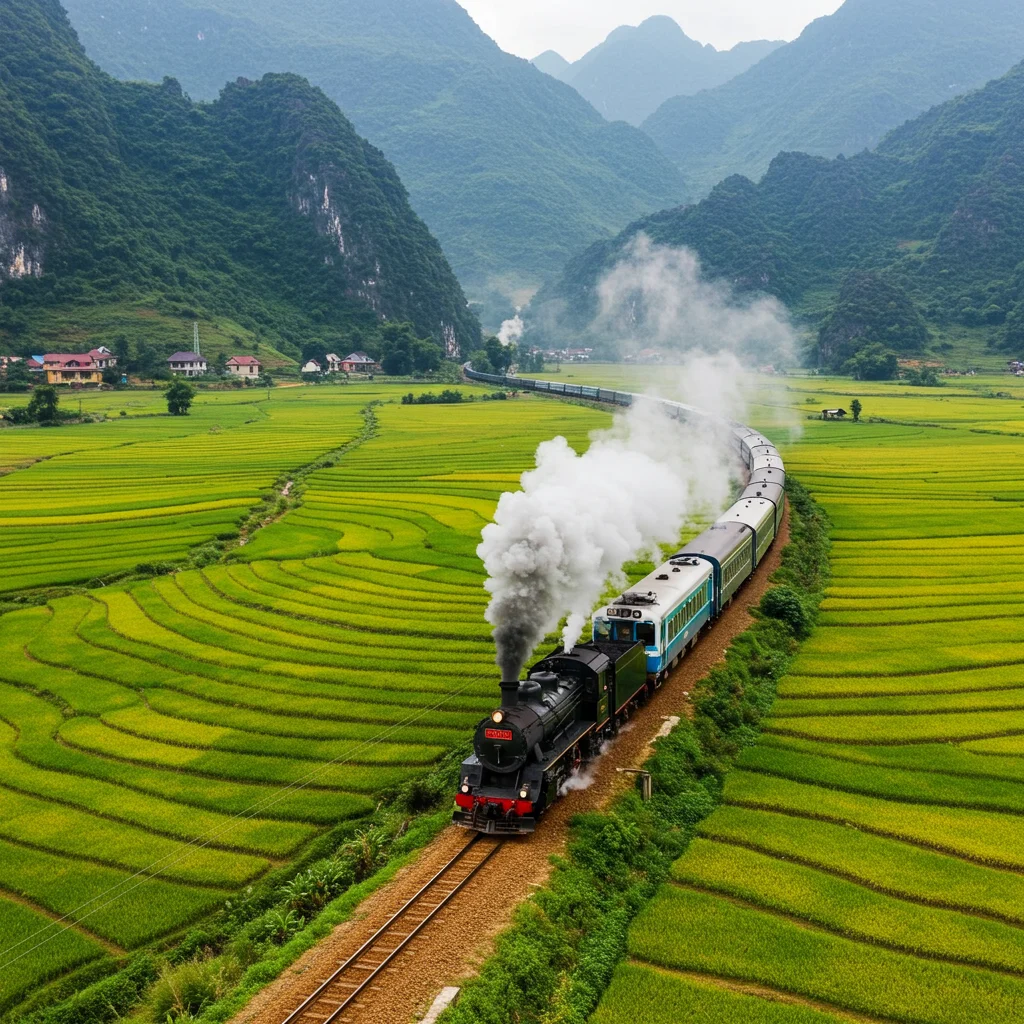
While all trains share the same tracks and schedule, the onboard experience can differ greatly depending on the service provider and class selected.
What Are the Different Classes on the Train?
Travelers can select from multiple classes on the Hanoi to Sapa trains, each offering a distinct level of comfort and privacy. The most common classes are soft sleeper, hard sleeper, and soft seat, with some trains offering luxury options as well.
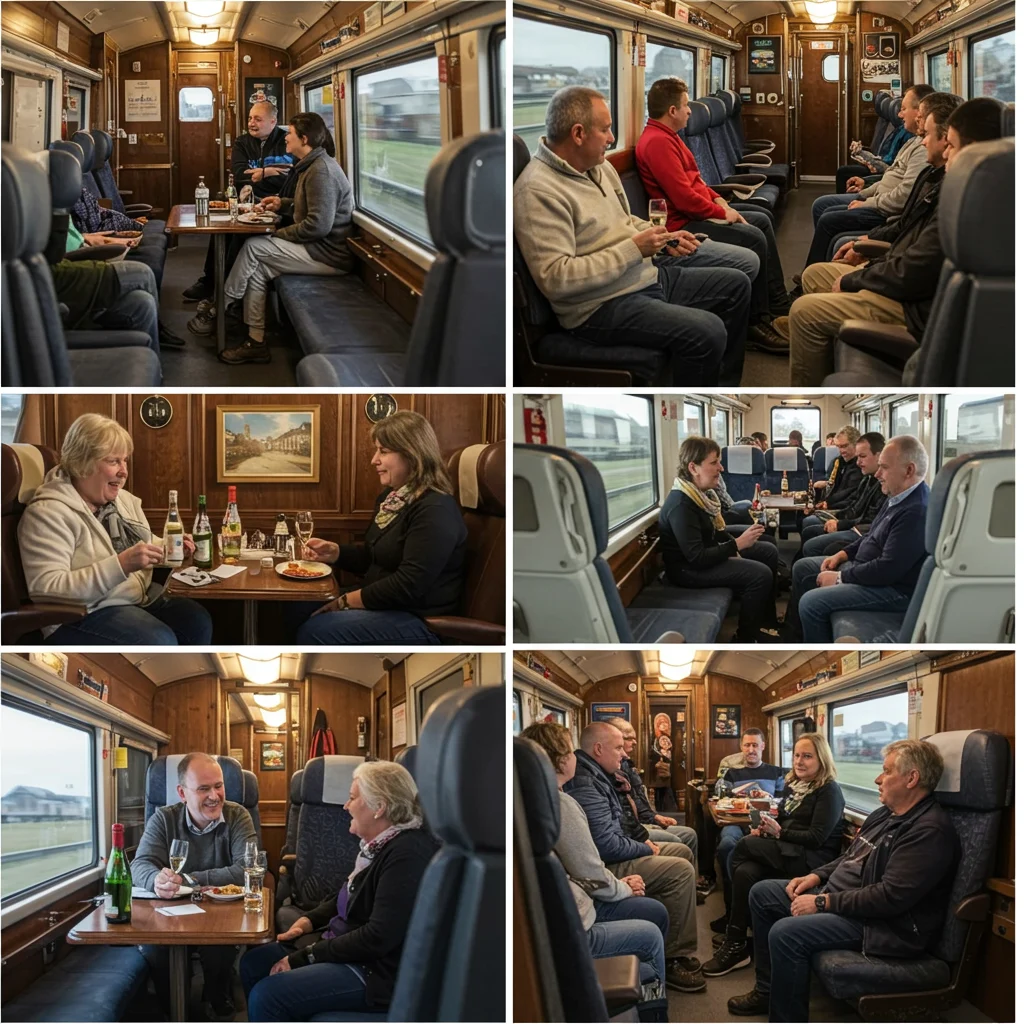
Comparing Soft Sleeper vs. Hard Sleeper vs. Soft Seat
The soft sleeper features four berths per cabin, soft mattresses, and more privacy, making it the preferred choice for most international travelers. The hard sleeper has six berths per cabin with firmer bedding and less space, suitable for budget-conscious passengers or those comfortable with simpler accommodations. The soft seat is a reclining seat in an open carriage, best for short trips or those who do not plan to sleep during the journey.
- Soft Sleeper: Best for comfort and privacy
- Hard Sleeper: Economical but less comfortable
- Soft Seat: Suitable for daytime travel
Luxury Train Options: Are They Worth It?
Several companies offer luxury train options with upgraded interiors, private bathrooms, and gourmet meals. These carriages provide an extra level of comfort and often include personalized service, plush bedding, and elegant décor. For those seeking a memorable or romantic journey, these premium cabins can be worth the additional investment.
However, even standard soft sleeper cabins offer a pleasant and restful ride for most travelers.
Which Train Companies Operate the Hanoi to Sapa Route?
Multiple operators serve the Hanoi to Sapa rail line, including both the national railway and private companies that attach their own upgraded carriages to regular trains. Each brings distinct features and price points, so understanding your options can help you select the best experience for your needs.
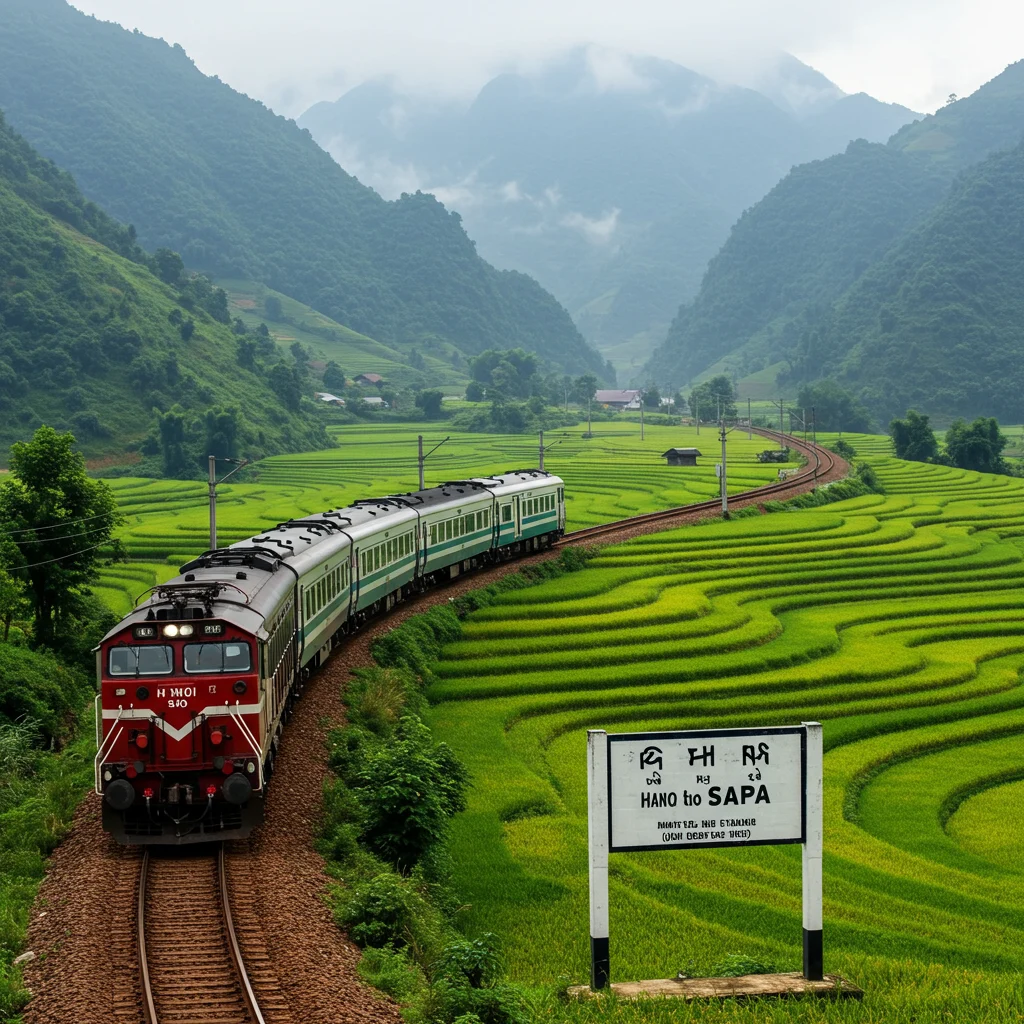
Vietnam Railways
Vietnam Railways runs the official trains between Hanoi and Lao Cai, providing reliable service and a range of standard seating and sleeper options. These trains are the backbone of rail travel in Vietnam and offer good value for budget-conscious travelers.
Private Carriages: Fansipan, Sapaly, Victoria Express & More
Private operators such as Fansipan Express, Sapaly Express, and Victoria Express offer enhanced levels of comfort, with premium bedding, personalized amenities, and sometimes even exclusive lounges. These carriages are attached to the main Vietnam Railways trains but are managed separately, ensuring a more refined and tranquil atmosphere for their guests.
Train Schedule: Departure and Arrival Times
Most Hanoi to Sapa trains depart in the evening, between 8:00 PM and 10:00 PM, arriving in Lao Cai early the next morning. This overnight schedule allows for maximum daytime exploration and is ideal for travelers who wish to sleep through the journey. It is advisable to check updated schedules in advance, as departure times can vary depending on the train and season.

How to Book Hanoi to Sapa Train Tickets
Securing your train tickets in advance is highly recommended, especially during peak travel periods. Tickets can be purchased online, at the station, or through reputable travel agents. Each method has its own advantages and considerations, which we explore below.
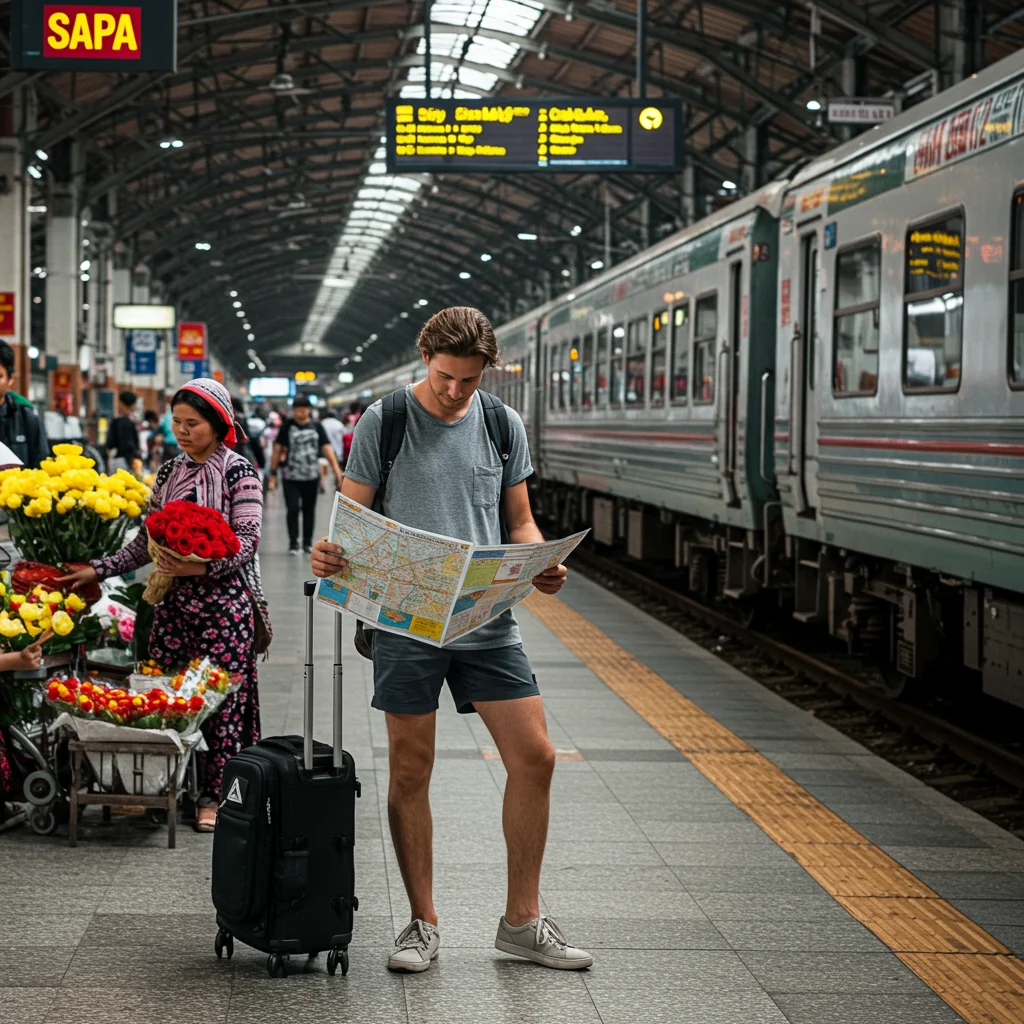
Booking Online vs. At the Station: Which Is Better?
Booking online offers convenience, instant confirmation, and the ability to select your preferred class and berth. Many travelers prefer this method to avoid language barriers and long queues at the station. Alternatively, purchasing tickets at the station can be more affordable but may limit your options, especially for popular trains or luxury cabins.
For those planning other activities, you can also book activities and tours through trusted platforms for a seamless experience.
Where to Buy Tickets: Official Sites and Third-Party Agents
Tickets can be purchased directly from Vietnam Railways’ official website, through private train company websites, or via third-party booking agents. When using third-party agents, ensure they are reputable to avoid scams or hidden fees. Many hotels and guesthouses in Hanoi also offer ticket booking services for added convenience.
Tips for Getting the Best Seats
To secure the best berths, especially in soft sleeper or luxury cabins, book as early as possible. Requesting a lower berth is advisable for those who prefer easier access and more privacy. If traveling as a group, reserve all berths in a cabin to ensure you stay together. Consider traveling on weekdays or outside of holiday periods for greater availability and potentially lower prices.
How Much Do Train Tickets Cost?
Train ticket prices vary depending on the class, operator, and time of booking. Standard soft sleeper tickets typically range from $30 to $50 USD per person, while luxury cabins can cost from $70 to $120 USD or more. Hard sleeper and soft seat options are more budget-friendly but offer fewer comforts.
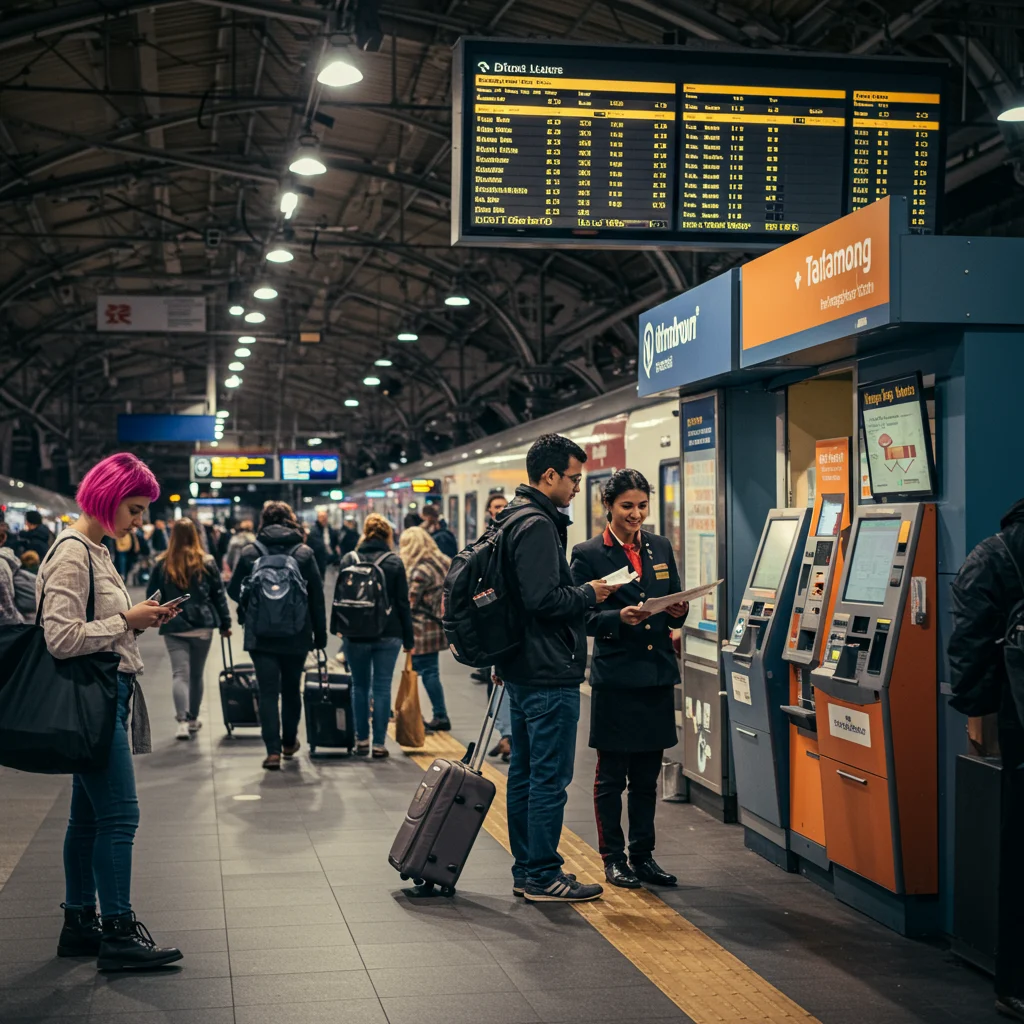
What Is Included in the Ticket Price?
Most tickets include a reserved berth or seat, basic bedding, and access to onboard toilets and washrooms. Some luxury trains provide additional perks such as welcome drinks, snacks, and private bathrooms. Always check what is included with your specific ticket to avoid surprises later.
Refunds, Cancellations, and Changes: What to Know
Refund and change policies differ by operator and ticket type. Generally, tickets purchased directly from Vietnam Railways can be refunded or changed with a small fee if done in advance. Private carriages may have stricter policies, especially during peak periods. Always review the terms and conditions before purchasing, and retain all receipts and confirmation emails for reference.
Hanoi Train Station: What to Expect
Hanoi Railway Station is centrally located and serves as the departure point for the Sapa-bound trains. The station is busy, especially in the evenings, but is generally well-organized with clear signage in both Vietnamese and English. Arriving early is advisable to allow time for check-in and boarding procedures.
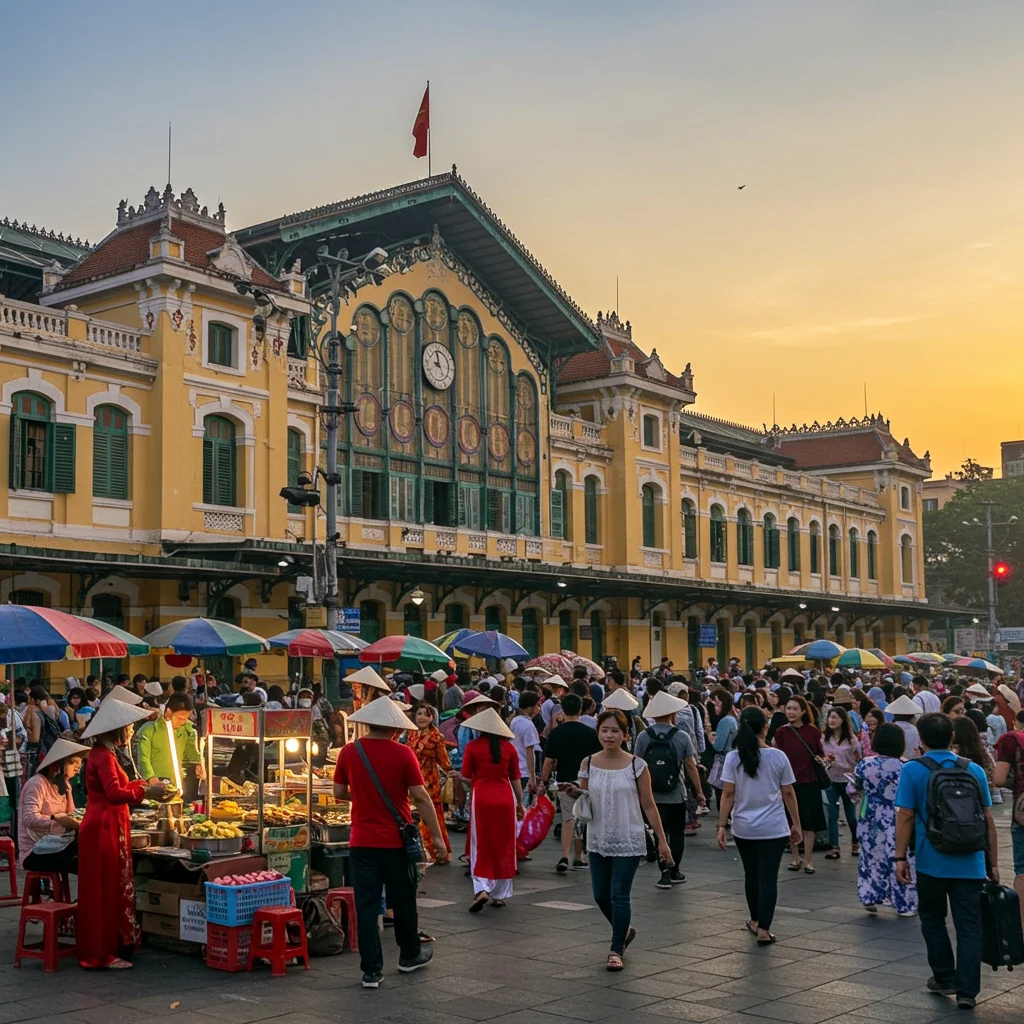
How to Get to Hanoi Station
Hanoi Station is accessible via taxi, ride-hailing apps, and local buses. Many hotels can arrange transfers, or you can take a short walk from the Old Quarter. Be sure to allow extra time during rush hour, as traffic in central Hanoi can be unpredictable.
Facilities and Amenities at the Station
The station offers waiting areas, restrooms, ticket counters, and small kiosks selling snacks and drinks. Some VIP lounges are available for luxury train passengers, providing a quieter place to relax before departure. Luggage storage and porters are also available for a fee.
Checking In and Boarding Procedures
Upon arrival, present your ticket at the designated counter or gate. Staff will direct you to your platform and carriage. Boarding typically begins 30–45 minutes before departure, and train staff are available to assist with luggage and seating. Announcements are made in both Vietnamese and English for major trains.
Onboard Experience: What Is the Train Like?
The onboard experience on the Hanoi to Sapa train is shaped by your choice of class and operator. Most carriages are air-conditioned, with comfortable bedding and basic amenities. The gentle rocking of the train and the soothing sound of wheels on the track make for a peaceful night’s sleep.
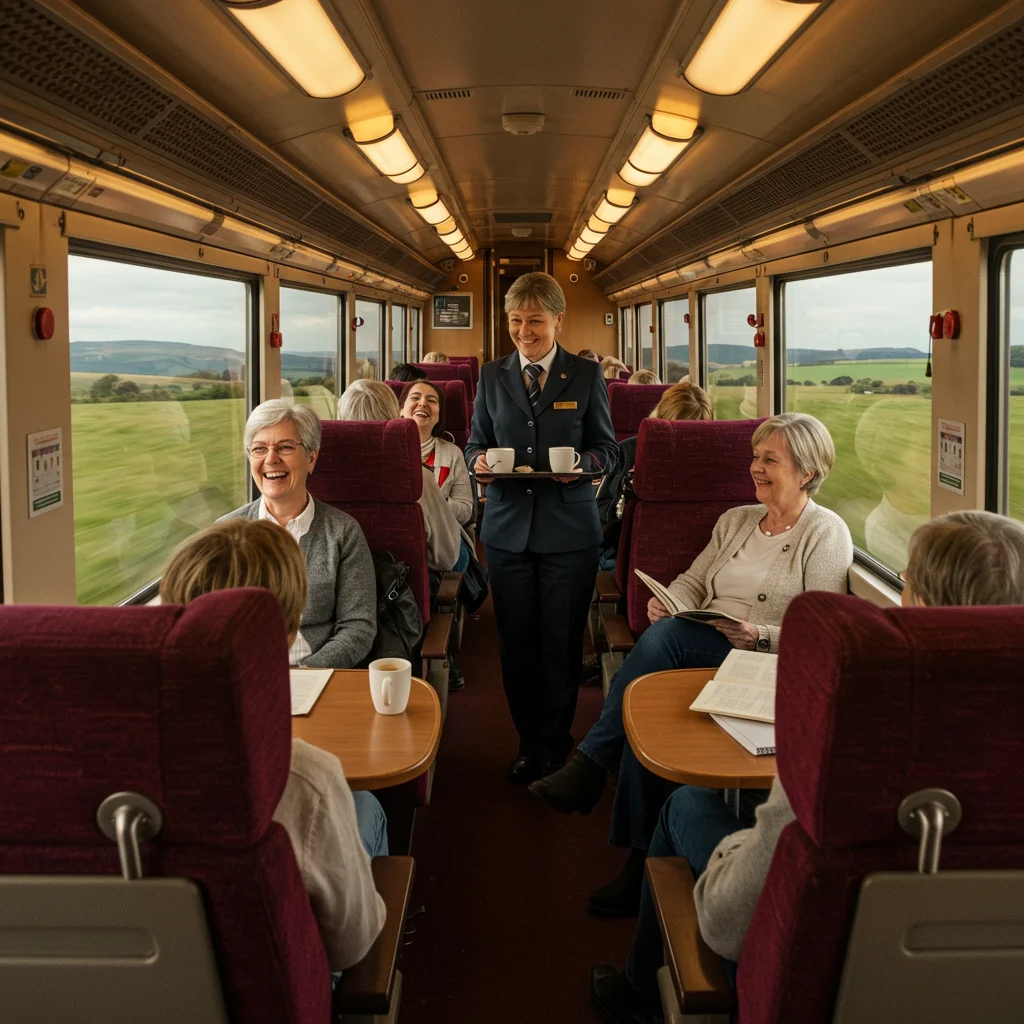
Cabin Layout and Comfort
Soft sleeper cabins typically accommodate four passengers, with two upper and two lower berths. Hard sleepers have six berths per cabin, and soft seats are arranged in open rows. Luxury carriages may offer two-berth private cabins with en suite bathrooms and extra space for luggage.
Cleanliness and Hygiene Standards
Cleanliness levels generally meet international expectations, especially in private or luxury carriages. Bedding is refreshed between trips, and staff regularly clean shared spaces. Bringing your own travel pillowcase or blanket can provide extra peace of mind.
Food and Drink Options Onboard
Light snacks and drinks are available for purchase onboard, but selection may be limited. Many travelers bring their own food, such as banh mi, fruit, or instant noodles. Some luxury trains include complimentary meals or offer onboard dining cars with a wider range of options.
Are There Power Outlets and Wi-Fi?
Some trains provide power outlets in cabins or communal areas, but availability is not guaranteed on all services. Wi-Fi is rare, so it is best to download entertainment or necessary documents in advance. For those needing to stay connected, local SIM cards with data are a reliable solution.
Toilets and Shower Facilities
Each carriage is equipped with shared toilets and basic washrooms. While generally clean, amenities can be basic, so packing hand sanitizer and tissues is recommended. Luxury trains may offer upgraded facilities, but showers are not commonly available.
What to Pack for the Train Journey
Packing thoughtfully will help ensure a comfortable and enjoyable ride. Consider both the overnight nature of the journey and the limited storage space in cabins.
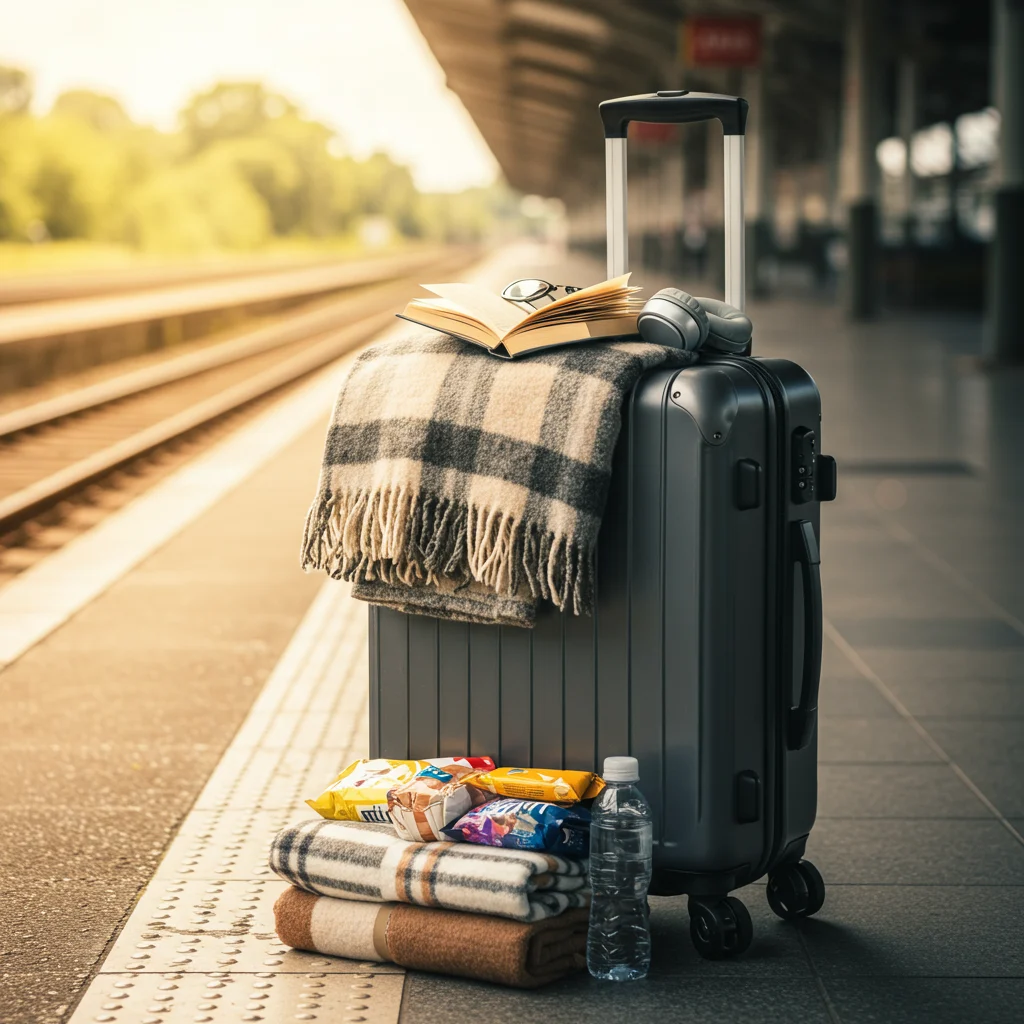
Essential Items for a Comfortable Ride
- Earplugs or noise-cancelling headphones
- Travel pillow and blanket
- Eye mask for sleeping
- Hand sanitizer and tissues
- Chargers and power bank
- Personal toiletries
Snacks, Drinks, and Entertainment
Bring your favorite snacks, bottled water, and perhaps a thermos for hot drinks. Download movies, podcasts, or books in advance, as onboard entertainment is limited. Simple games or a travel journal can also help pass the time during the journey.
Safety Tips for Train Travelers
Traveling by train in Vietnam is generally safe, but a few precautions can further enhance your security and peace of mind.
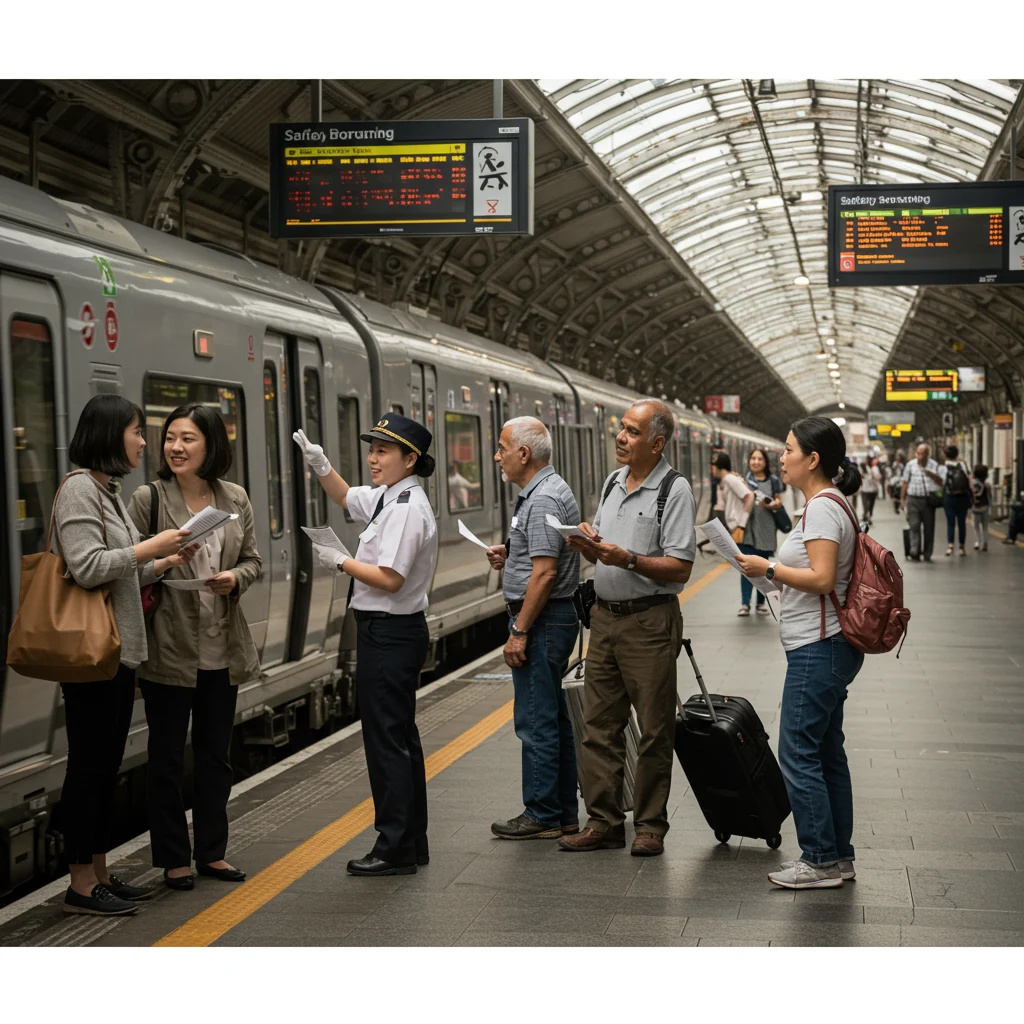
Keeping Your Belongings Secure
Keep valuables close and use luggage locks for bags stored under berths or in communal areas. Do not leave important items unattended, especially overnight. For additional safety tips relevant to travel in Vietnam, review our post on traveling the Cu Chi Tunnels with an English guide.
Traveling with Children or Pets: What to Know
Children are welcome on the train, but supervision is essential, especially when moving between carriages or using the toilets. If traveling with pets, contact your chosen train operator in advance, as policies vary and may require advance arrangements or specific documentation.
Scenic Highlights Along the Hanoi to Sapa Train Route
The journey from Hanoi to Sapa is celebrated for its captivating landscapes. Wide rivers, terraced rice paddies, and distant mountains paint a vivid picture through your cabin window. Morning mist often lingers in the valleys, and the air is crisp and fresh as the train climbs toward the highlands.

What Landscapes Will You See?
Expect to see lush countryside, traditional villages, and the Red River winding alongside the tracks. The transition from lowland plains to mountainous terrain offers ever-changing vistas, with farmers working in fields and children waving from the roadside.
Best Times to Enjoy the Scenery
The most dramatic views are often during sunrise and sunset. Booking a train that passes through the mountains during daylight hours will maximize your scenic enjoyment. Spring and autumn deliver the clearest skies and vibrant colors along the route.
Photography Tips for the Journey
Keep your camera ready for spontaneous moments—buffalo grazing, farmers tending crops, and dramatic cloud formations. Use a fast shutter speed to compensate for the train’s movement, and consider a seat near a window for unobstructed views. As experts often say:
“The journey is not just about reaching the destination, but about savoring the moments in between.”
Lao Cai Station: The Gateway to Sapa
Lao Cai Station marks the end of the train line and the start of your ascent to Sapa town. The station is busy in the early morning, with a steady flow of travelers, porters, and local drivers ready to help you complete your journey.
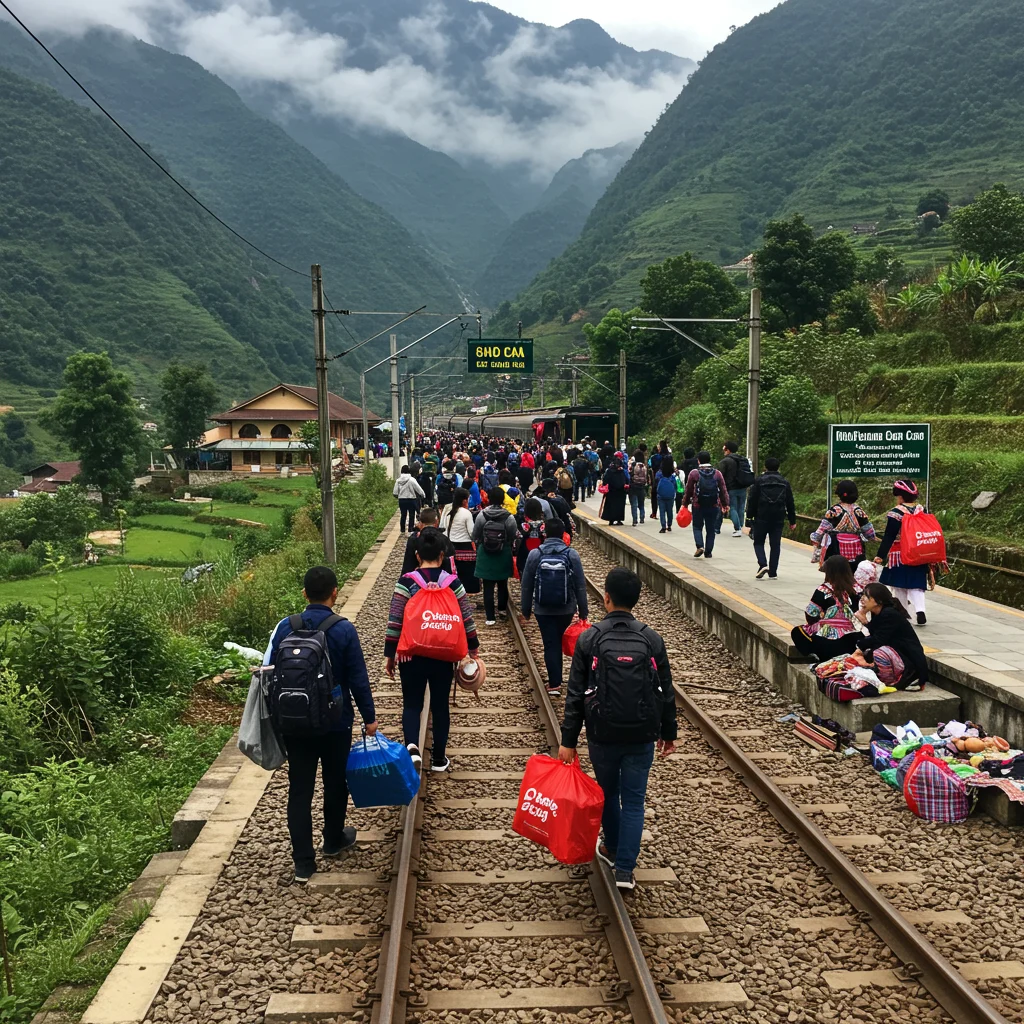
Arrival Procedures at Lao Cai
Upon arrival, collect your luggage and follow the signs to the exit. Immigration is only required if you are crossing into China; otherwise, continue directly to the transport area for onward travel to Sapa.
Facilities and Services at Lao Cai Station
Lao Cai Station offers basic amenities such as restrooms, small shops, and waiting areas. Taxis and shuttle buses to Sapa are readily available just outside the main entrance. Staff are accustomed to assisting foreign travelers and can provide directions or help with luggage.
How to Get from Lao Cai to Sapa Town
The final leg from Lao Cai to Sapa can be completed by shuttle bus, taxi, or private transfer. The drive takes approximately one hour and winds through scenic mountain roads, providing a preview of the landscapes awaiting you in Sapa.
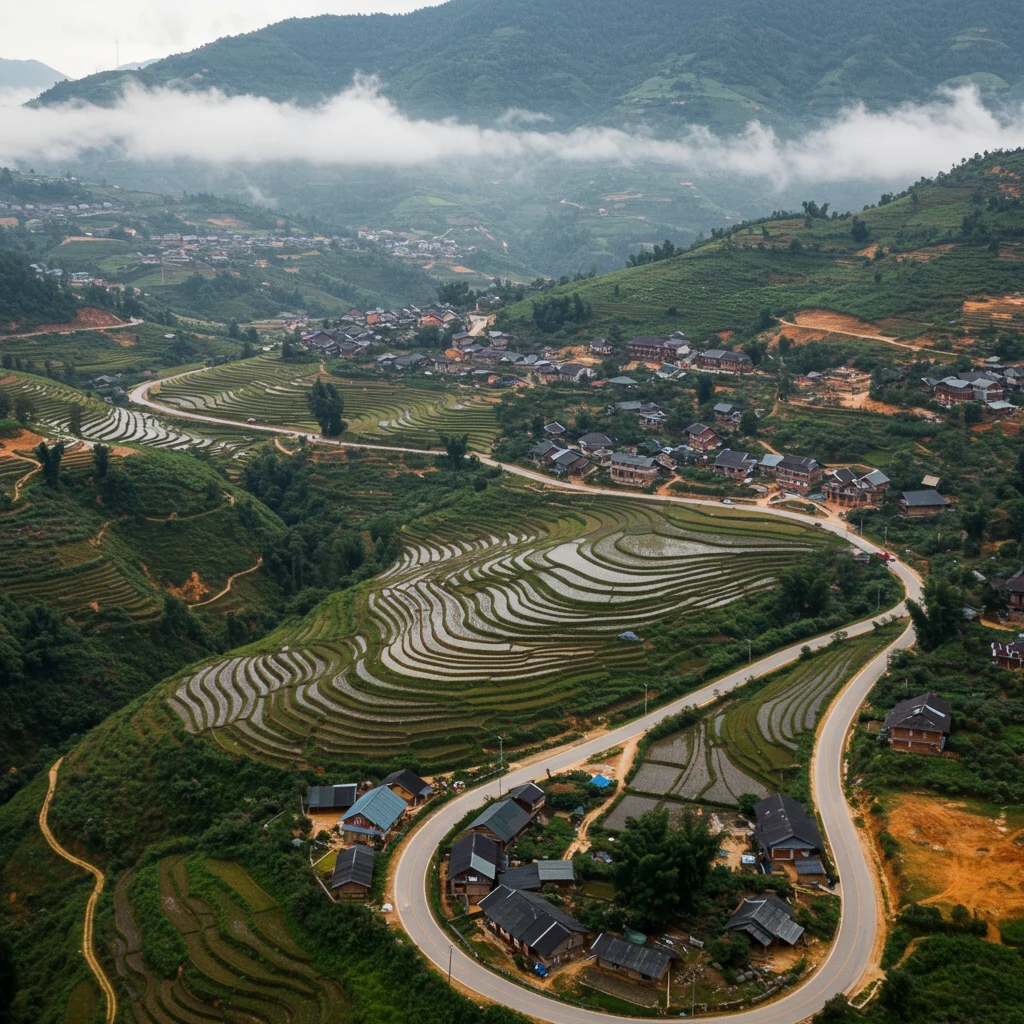
Shuttle Bus Options
Shuttle buses are the most popular and affordable choice, departing regularly to coincide with train arrivals. Tickets can be purchased at the station or in advance through hotels and travel agents.
Taxi and Private Transfers
For greater comfort or flexibility, taxis and private cars are readily available. Negotiate the fare before departing or request a metered ride. Some luxury train operators offer complimentary transfers for their guests.
Can You Rent a Motorbike or Bicycle?
Adventurous travelers may choose to rent a motorbike or bicycle for the journey to Sapa. Several rental agencies operate near Lao Cai Station, but be prepared for winding, steep roads and changing weather conditions. Always wear a helmet and check the condition of your vehicle before setting out.
Comparing Train vs. Bus vs. Private Car to Sapa
Each mode of transport from Hanoi to Sapa offers distinct advantages and drawbacks. The right choice depends on your priorities: comfort, cost, flexibility, and the kind of experience you wish to have.
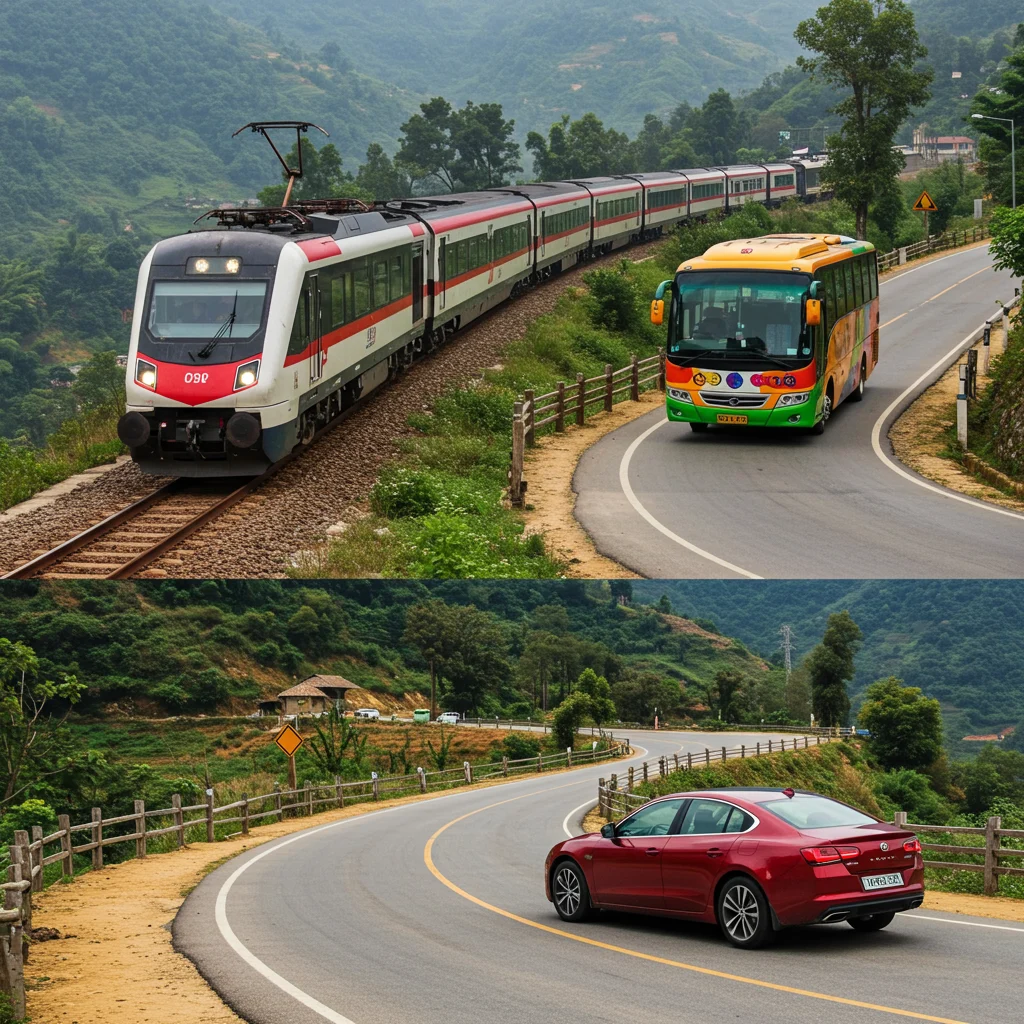
Which Is the Best Option for You?
The train provides a restful overnight journey and stunning scenery, making it ideal for those who value both comfort and experience. Buses are faster and more direct but may be less comfortable for overnight travel. Private cars offer maximum flexibility and privacy, with the option to stop at points of interest along the way.
Pros and Cons of Each Mode of Transport
- Train: Comfortable, scenic, social; requires transfer at Lao Cai
- Bus: Direct, affordable, frequent departures; less comfortable for sleeping
- Private Car: Flexible, fast, private; higher cost
For inspiration on combining train and road travel with relaxation, you may appreciate our account of the Krakow to Zakopane and thermal hot bath day trip.
Traveling in Different Seasons: What to Expect
Seasonal changes dramatically affect the Hanoi to Sapa journey. Weather, scenery, and local events all play a part in shaping your experience.
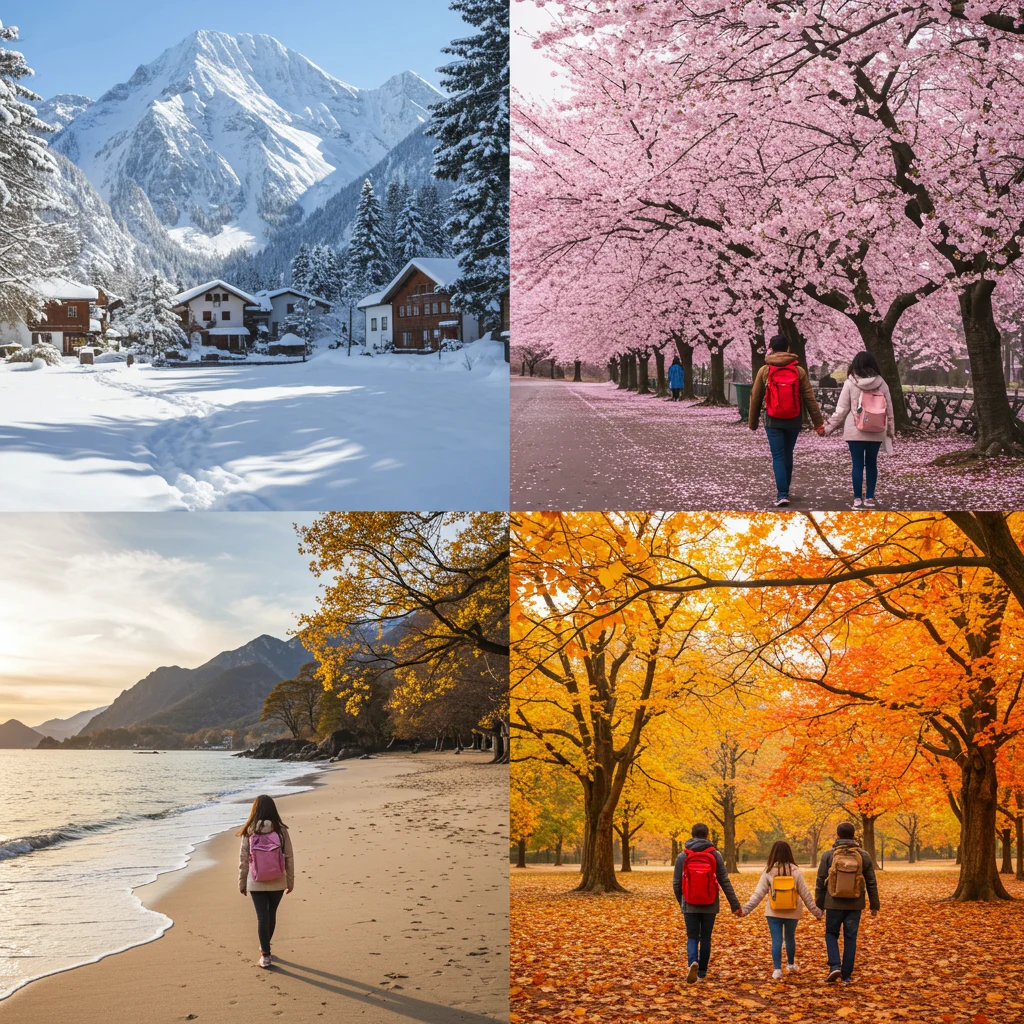
Weather Conditions and Scenic Views
Spring (March to May) and autumn (September to November) offer the best weather—cool, clear, and dry, with lush green landscapes. Summer brings rain and occasional landslides, while winter can be misty and cold, especially in the mountains. Always check the forecast and pack accordingly.
Festivals and Events Along the Route
Traveling during major festivals such as Tet (Vietnamese New Year) or local harvest celebrations can be particularly rewarding, with colorful processions and lively markets. Be aware that trains may book out quickly during these periods, so plan ahead.
Accessibility: Is the Train Suitable for Everyone?
While the Hanoi to Sapa train is accessible to most travelers, those with limited mobility or special needs should plan ahead to ensure a smooth experience. Facilities and support services are available, but may be limited compared to Western standards.
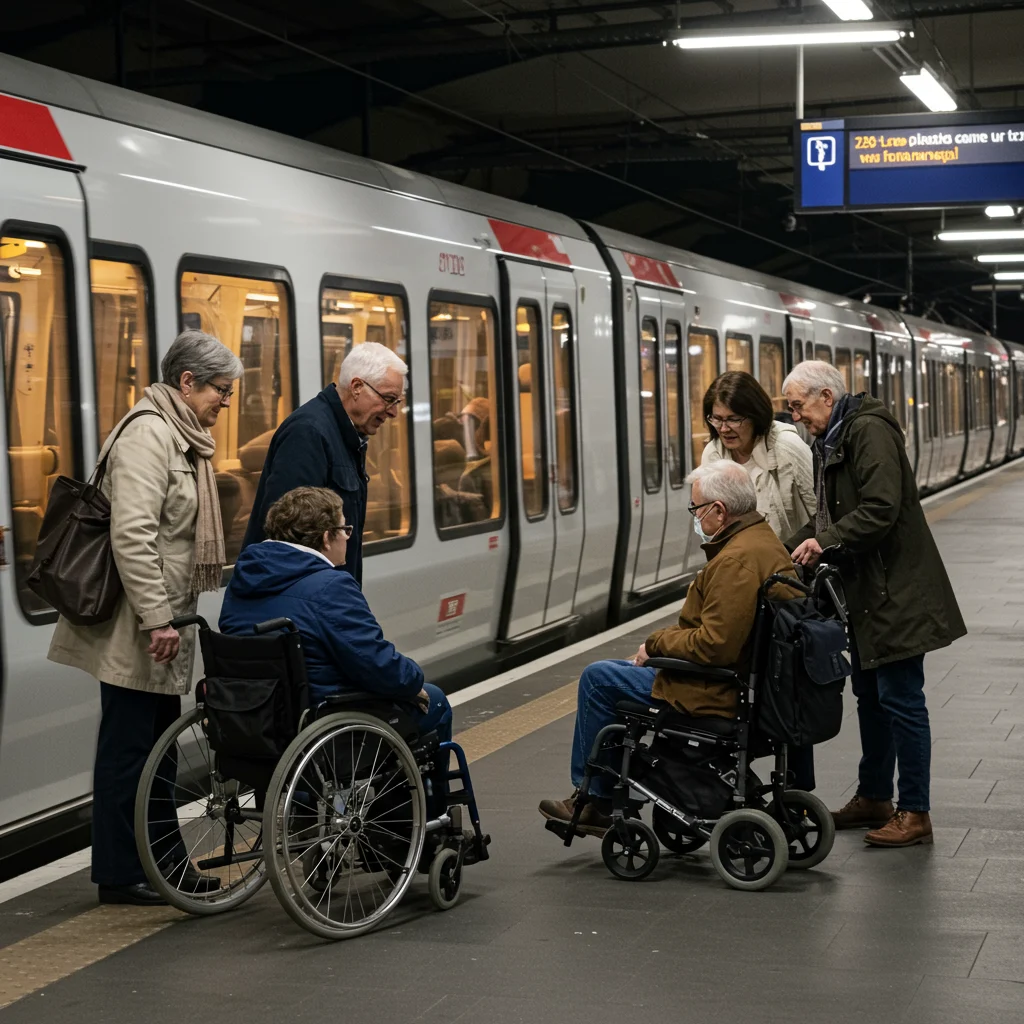
Facilities for Disabled Travelers
Some newer train carriages and stations have ramps and accessible restrooms, but not all services are fully equipped. Contact your chosen operator in advance to discuss specific needs and request assistance if required.
Assistance and Support Services
Train staff are generally helpful and can assist with boarding, luggage, and navigating the station. For more comprehensive support, consider arranging a private transfer at both ends of your journey.
Solo, Family, and Group Travel: Tips and Advice
The Hanoi to Sapa train is well-suited for all types of travelers, from solo adventurers to families and large groups. Shared cabins can be a great way to meet fellow travelers, while private compartments offer extra privacy for families or couples.
How to Make Friends on the Train
Train journeys create a social environment, with opportunities to chat, share snacks, and exchange travel stories. Respectful curiosity and a friendly attitude go a long way in building connections. If you’re planning a longer stay in Vietnam’s cities, our guide to the best areas to stay in Ho Chi Minh City may be helpful for your onward plans.
Group Booking Discounts and Arrangements
Groups can often reserve entire cabins at a discounted rate, especially when booking directly with private train operators. Contact the company in advance to discuss your needs and secure adjacent berths or compartments.
Cultural Etiquette and Local Customs on the Train
Observing local customs and etiquette enhances your experience and shows respect for fellow passengers. Vietnamese trains are generally quiet at night, and travelers are expected to keep noise to a minimum after lights out.

Do’s and Don’ts When Interacting with Locals
- Greet fellow passengers politely
- Remove shoes before entering sleeper cabins
- Avoid loud conversations or phone use at night
- Share snacks or small gifts as a gesture of goodwill
- Respect personal space and privacy
Sustainable and Responsible Train Travel
Traveling by train is inherently more environmentally friendly than flying or driving, but there are additional steps you can take to further reduce your impact and support local communities along the route.
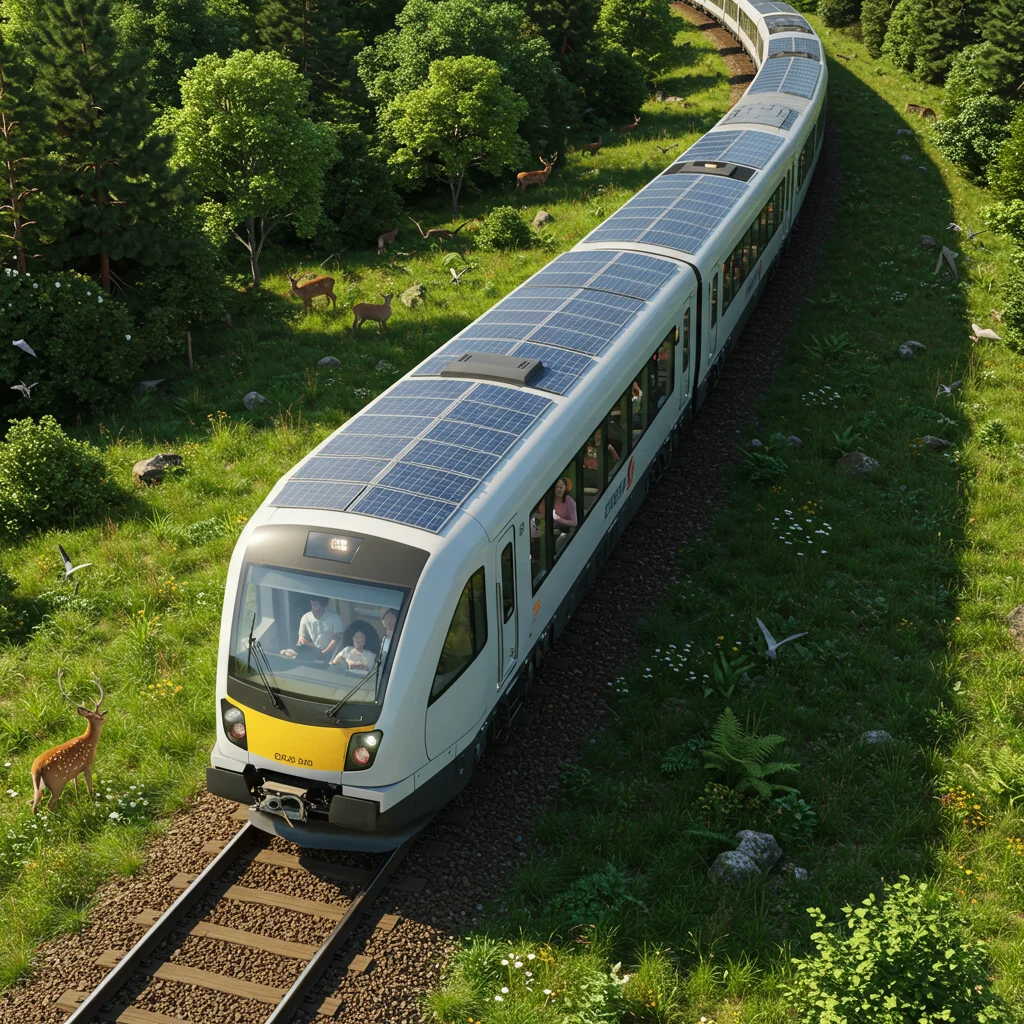
How to Minimize Your Environmental Impact
- Bring reusable water bottles and cutlery
- Avoid single-use plastics
- Dispose of waste responsibly
- Choose locally sourced snacks and souvenirs
Supporting Local Businesses Along the Route
Whenever possible, purchase food, crafts, and services from local vendors at the stations or in Sapa. This not only enriches your experience but also supports the livelihoods of those living along the railway line. For those interested in Vietnam’s coastal destinations, our guide to the best beaches in Phu Quoc highlights additional ways to travel responsibly.
Frequently Asked Questions About the Hanoi to Sapa Train
Below are answers to some of the most common queries from travelers considering the Hanoi to Sapa train journey.

What If My Train Is Delayed or Cancelled?
Delays and cancellations are rare but can occur due to weather or operational issues. In such cases, staff will assist with rebooking or provide updates. Booking through reputable agents or directly with operators can help streamline the process if changes are needed.
Is It Safe to Travel Overnight?
Overnight train travel in Vietnam is considered safe, with staff present on each carriage and security measures in place. Keep your cabin door locked and valuables close for added peace of mind.
What Should I Do in Case of an Emergency?
In case of an emergency, notify train staff immediately. Emergency numbers and procedures are posted in each carriage, and staff are trained to handle medical or security issues. Carry any necessary medication and keep important documents easily accessible.
Traveler Stories: Memorable Experiences on the Hanoi to Sapa Train
Many travelers cherish their memories of the Hanoi to Sapa train, recalling the camaraderie among passengers, the gentle sway of the train, and the awe-inspiring scenery. Some recount sharing stories with local families, while others remember waking to the sight of mist rolling over the mountains.
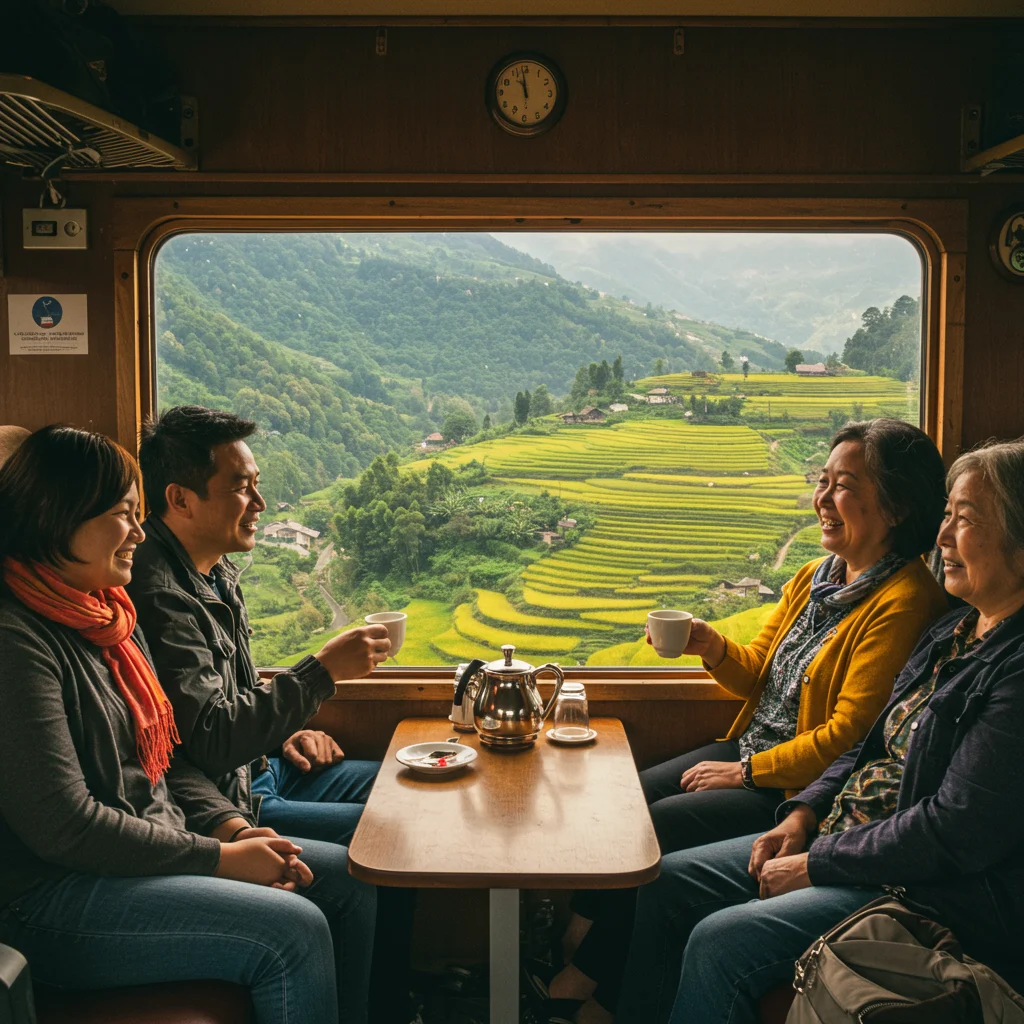
Tips from Repeat Travelers
- Book lower berths for easier access and better views
- Bring your own snacks and drinks
- Pack warm clothing, even in summer, as cabins can be chilly
- Arrive at the station early to avoid last-minute stress
How to Book on Viator
Booking your Hanoi to Sapa train tickets and related activities is easy with Viator, a trusted platform that connects travelers with reliable transport and curated experiences. Simply visit Viator’s website, search for your preferred train route, and follow the prompts to secure your tickets. The site allows you to compare options, read verified reviews, and choose additional excursions or transfers for a seamless trip.

For added convenience, you can also plan your trip by booking tours and activities along the way, ensuring your journey to Sapa is both smooth and memorable.
Summary: Is the Hanoi to Sapa Train Journey Right for You?
The Hanoi to Sapa train journey is perfect for those who appreciate slow travel, scenic landscapes, and cultural immersion. Whether you’re a solo adventurer, traveling with family, or exploring with friends, the train offers a unique and rewarding way to reach Vietnam’s northern highlands. With a variety of classes and operators available, there’s an option to suit every traveler’s needs and budget.
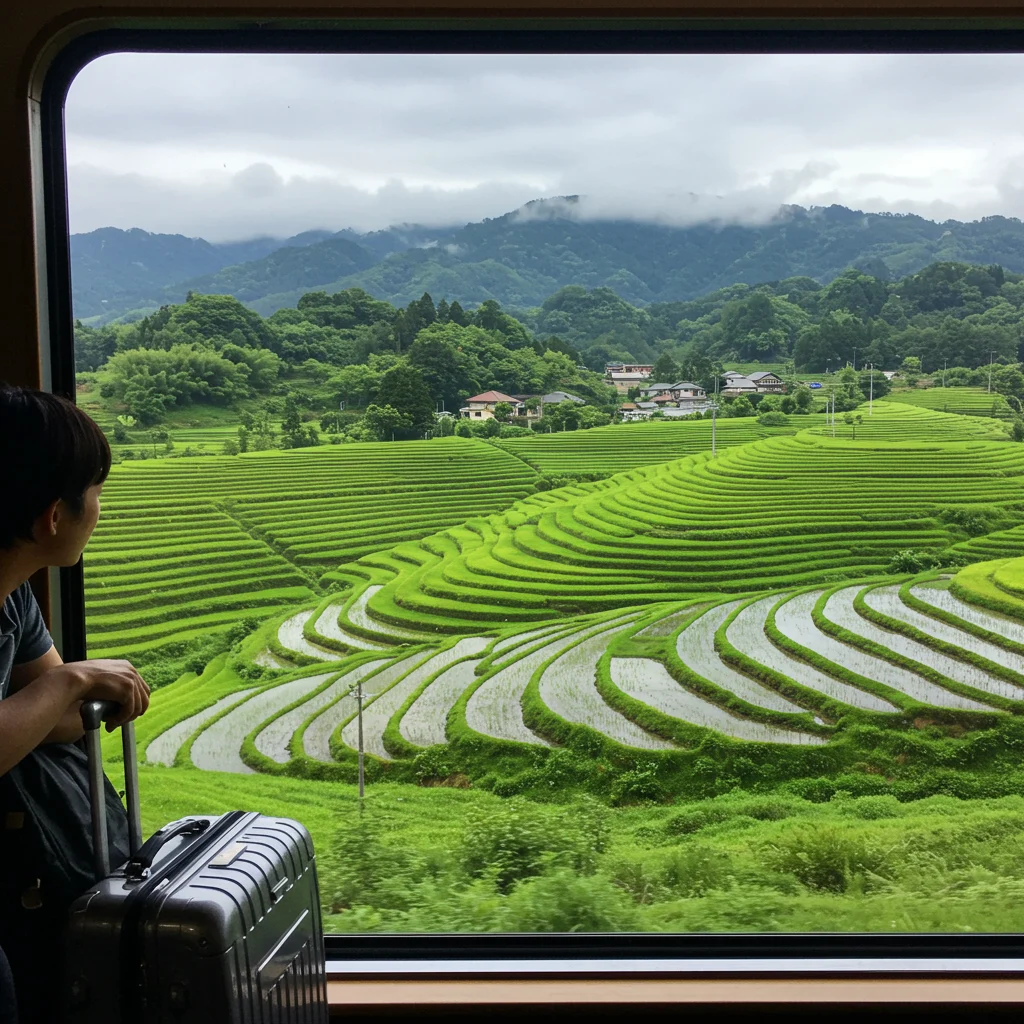
Final Thoughts and Recommendations
Embarking on the train from Hanoi to Sapa promises more than transportation—it is an experience that lingers in memory long after arrival. We encourage travelers to embrace the journey, savor the scenery, and connect with new friends along the way. For more travel inspiration and expert tips, visit Unisho, your trusted companion for authentic travel experiences.

Disclaimer: This information is accurate to the best of our knowledge; however, there may be changes or mistakes. Please verify exact details on the Viator booking page.

